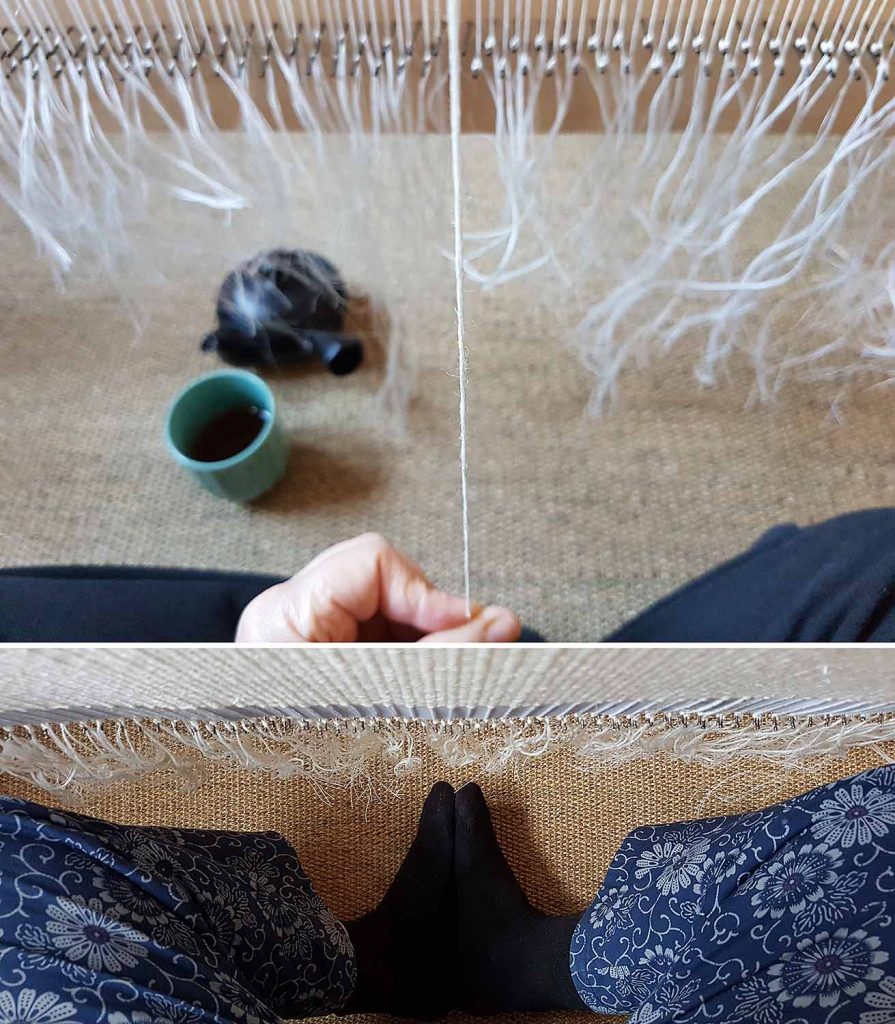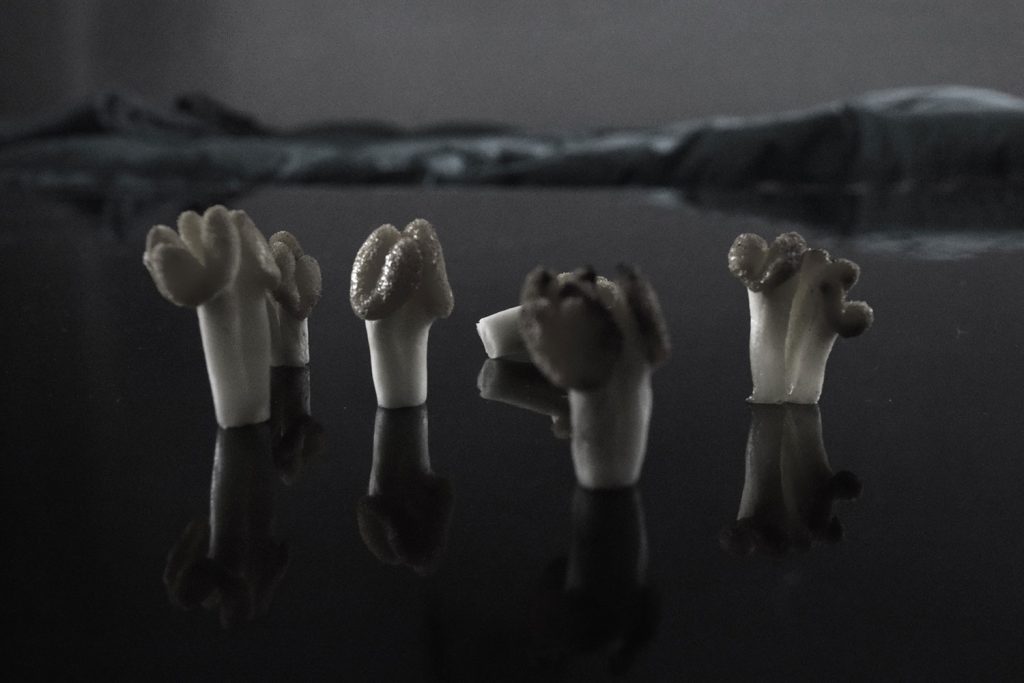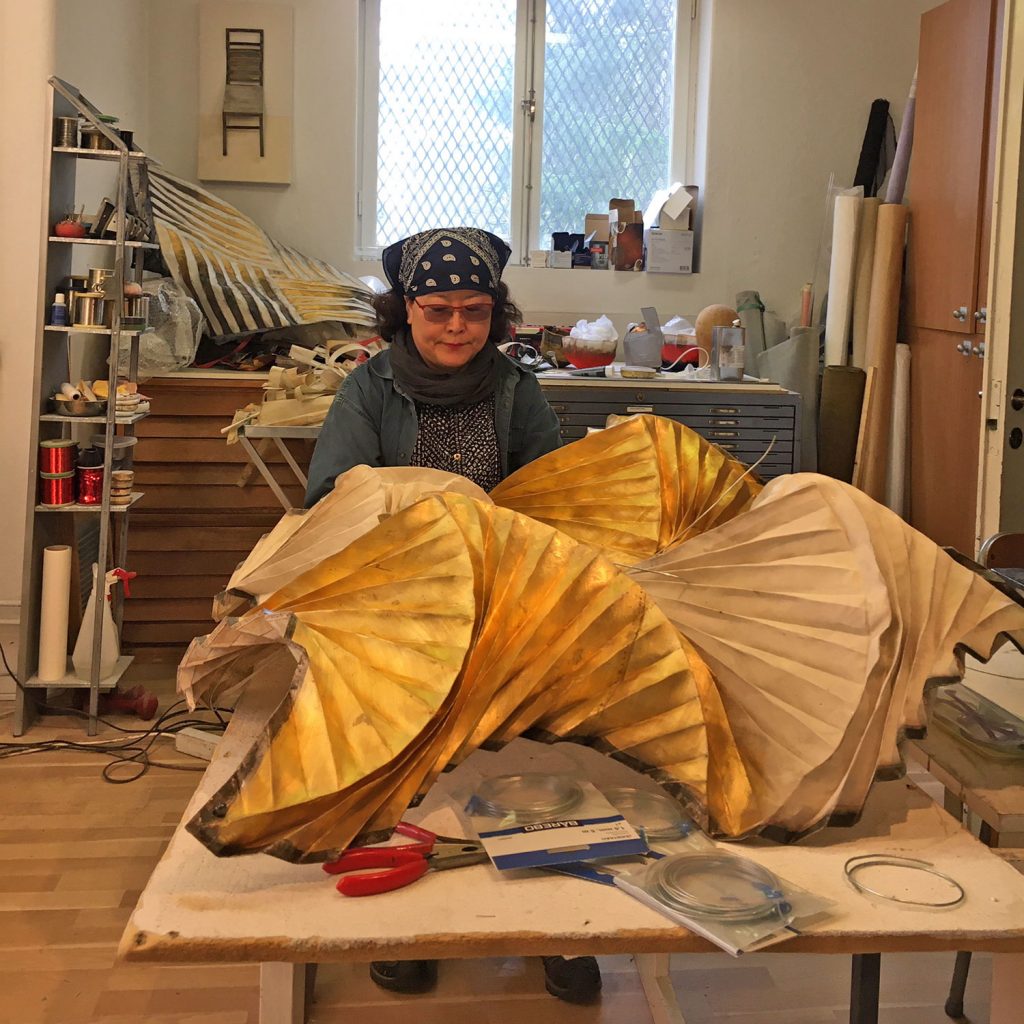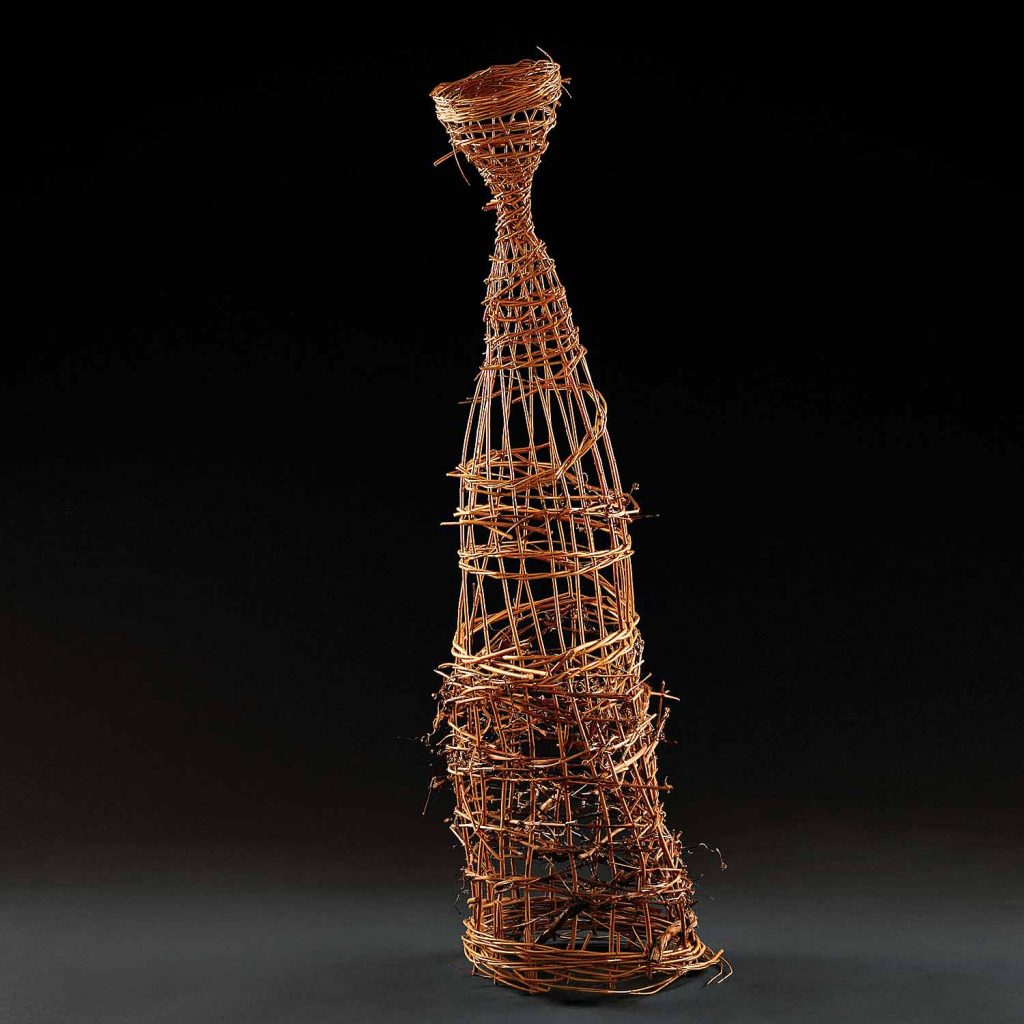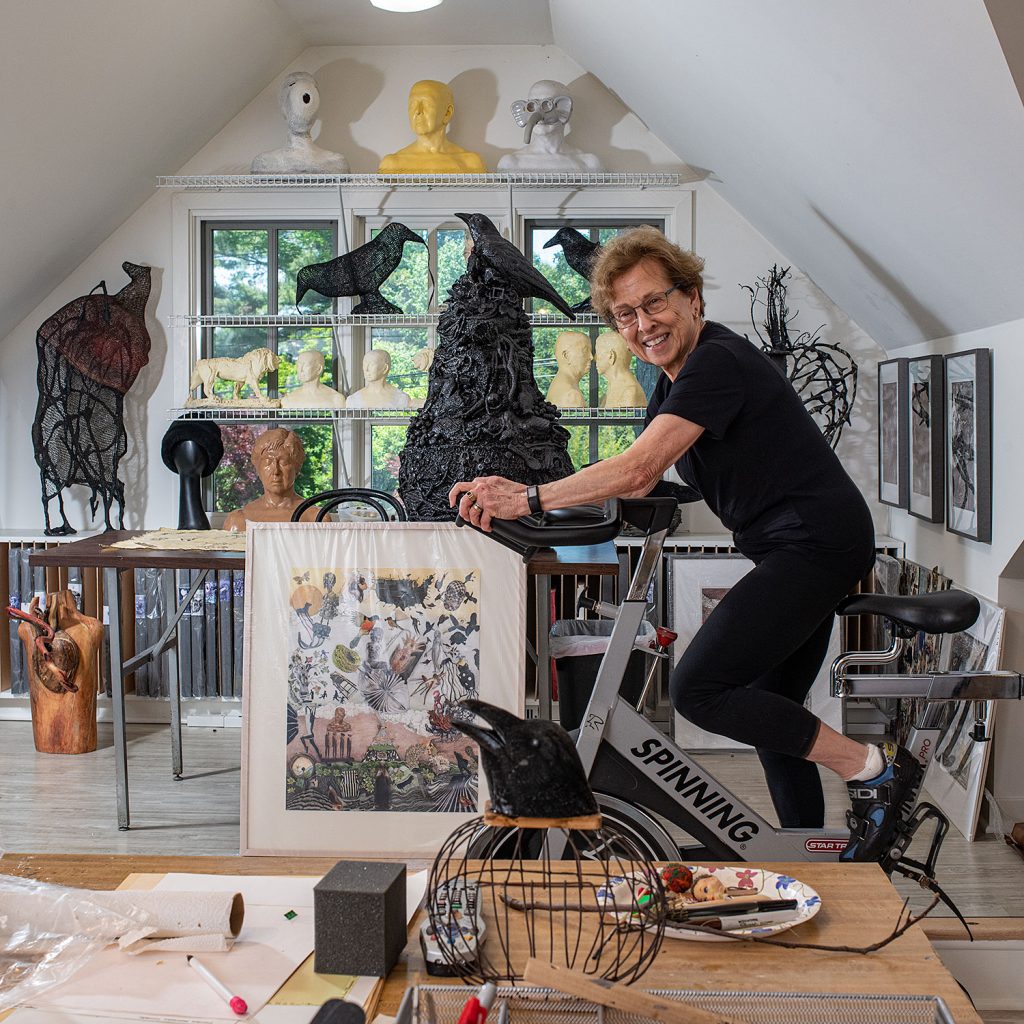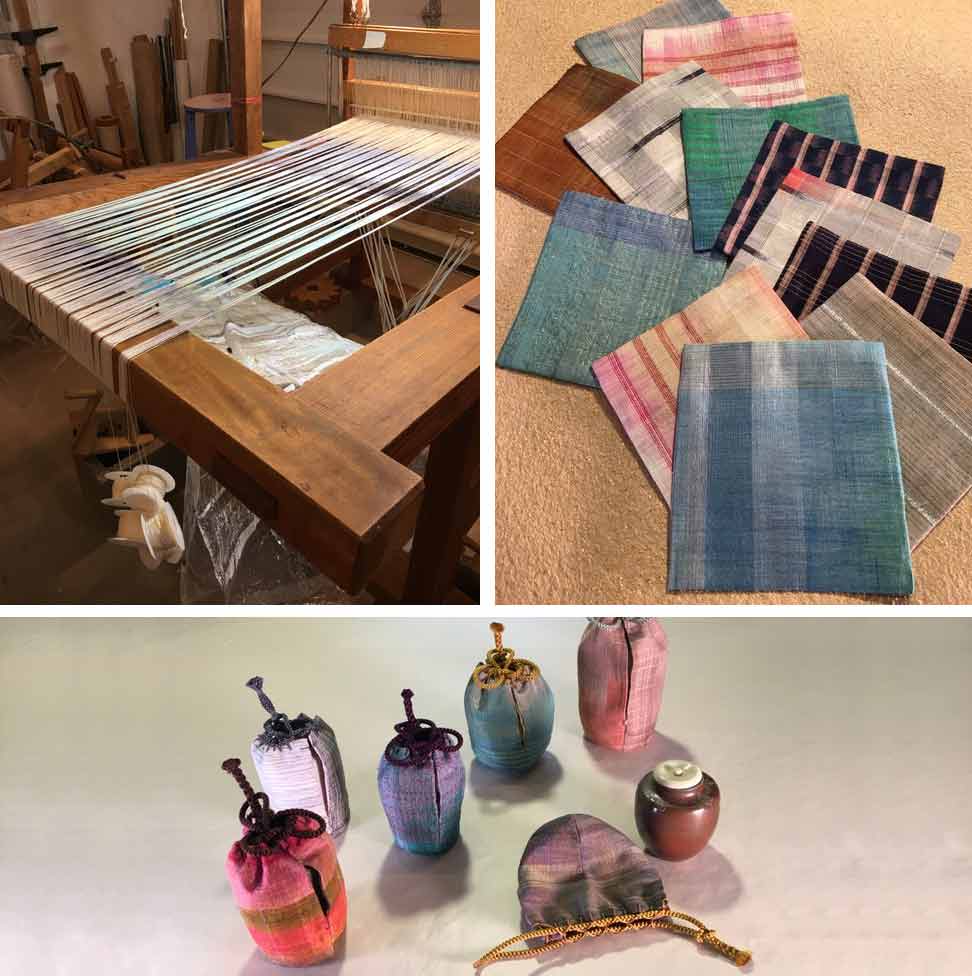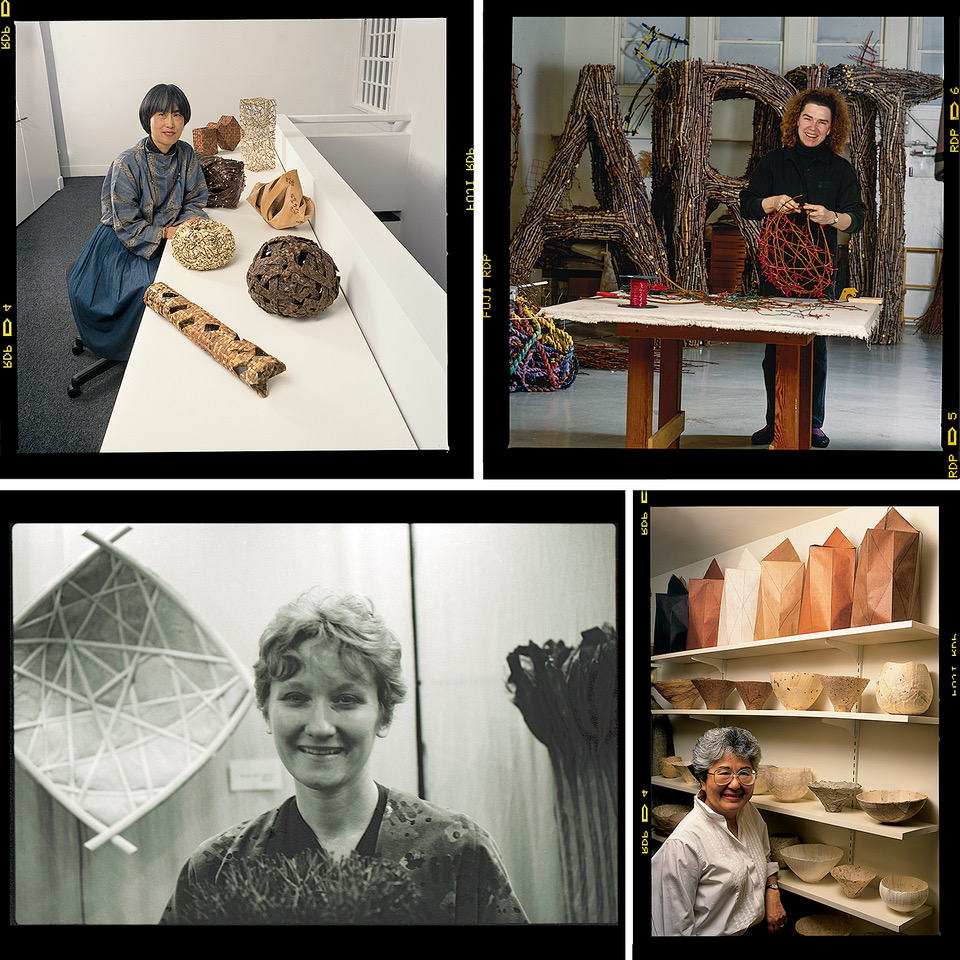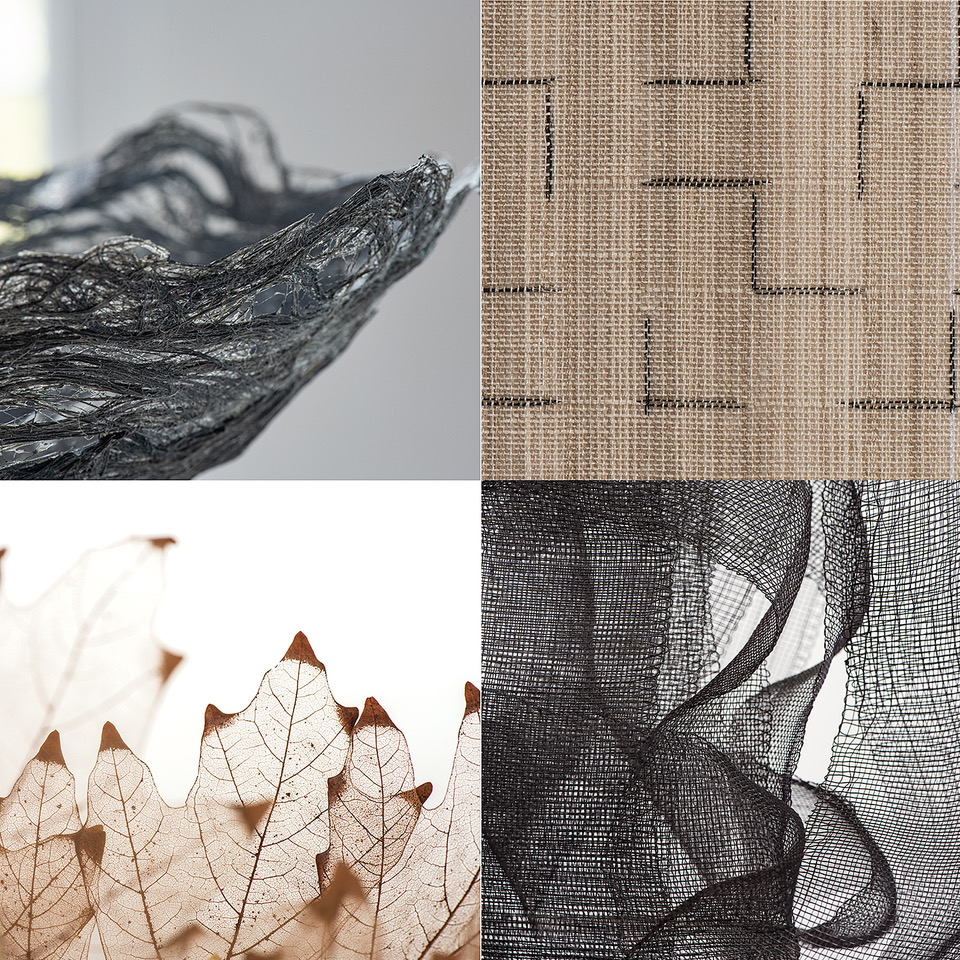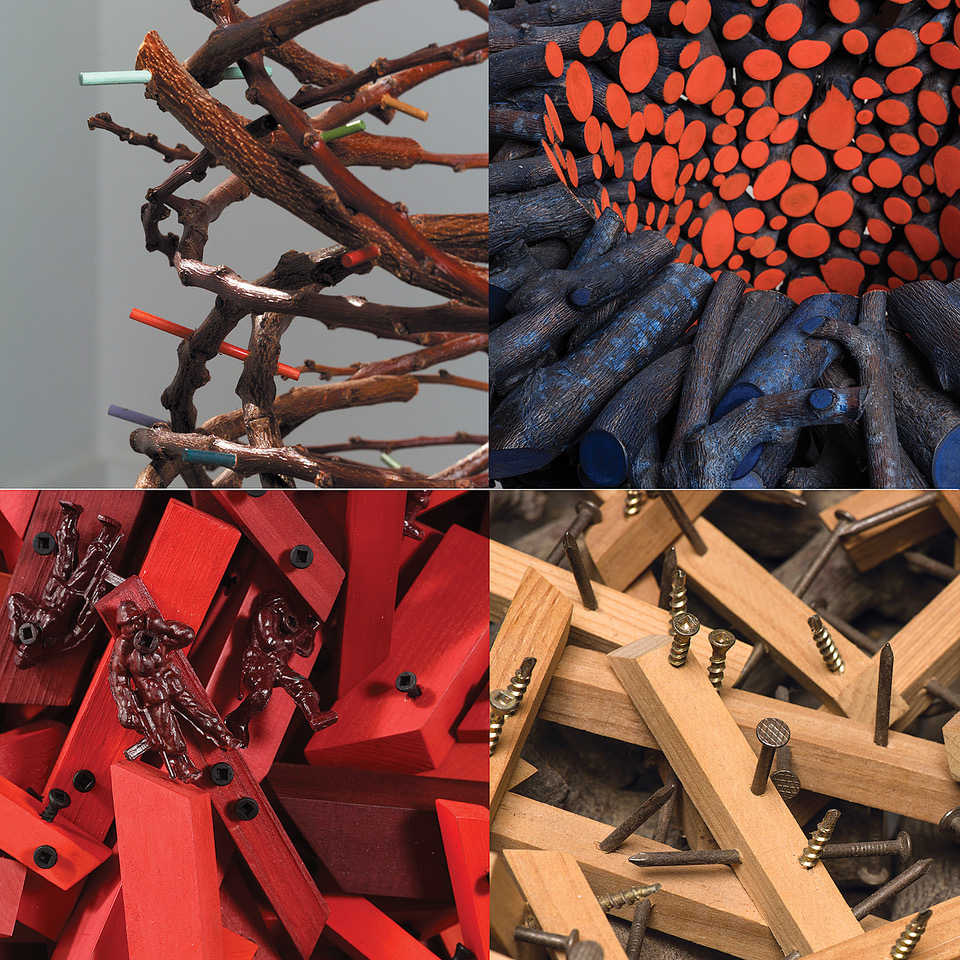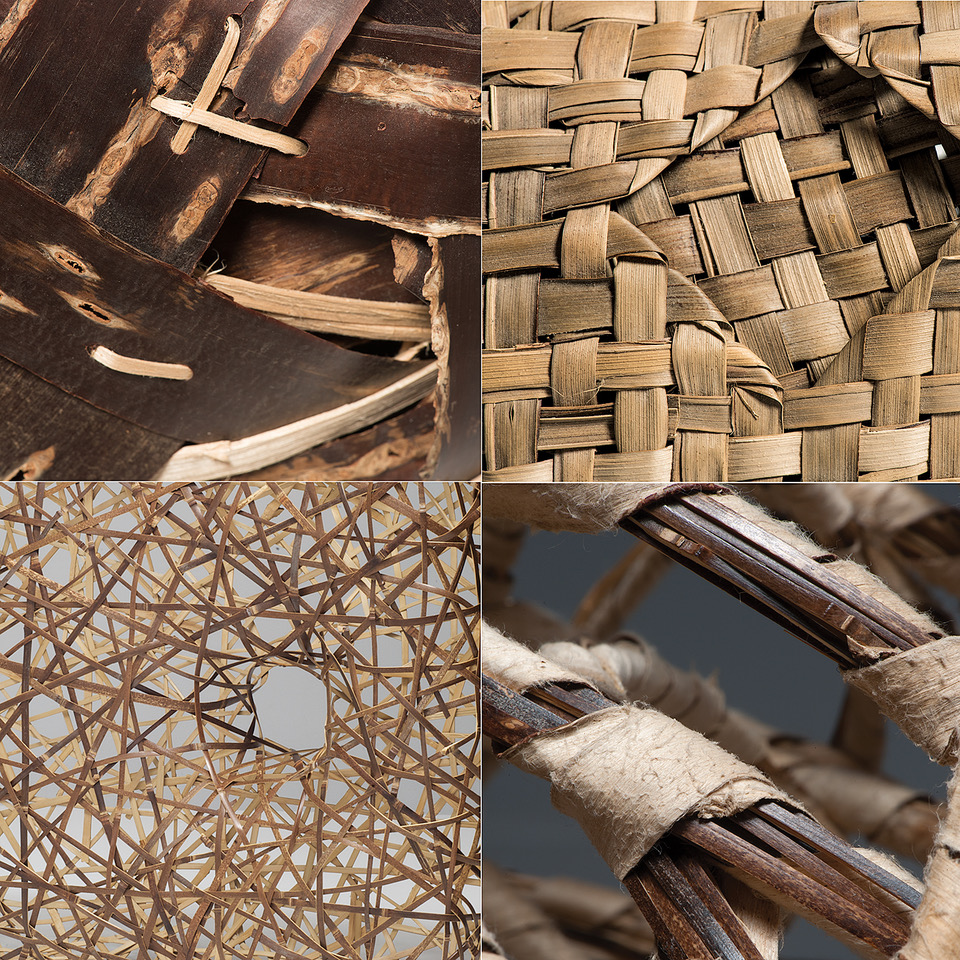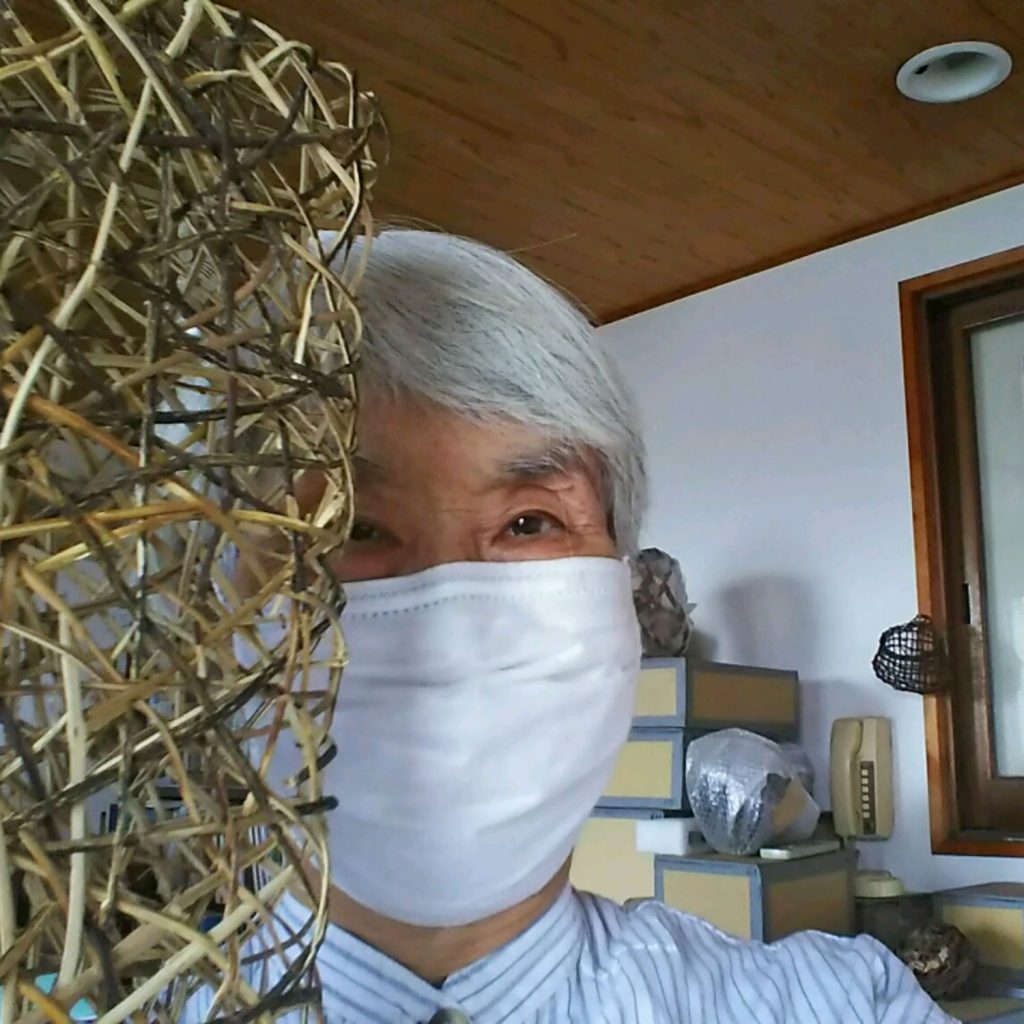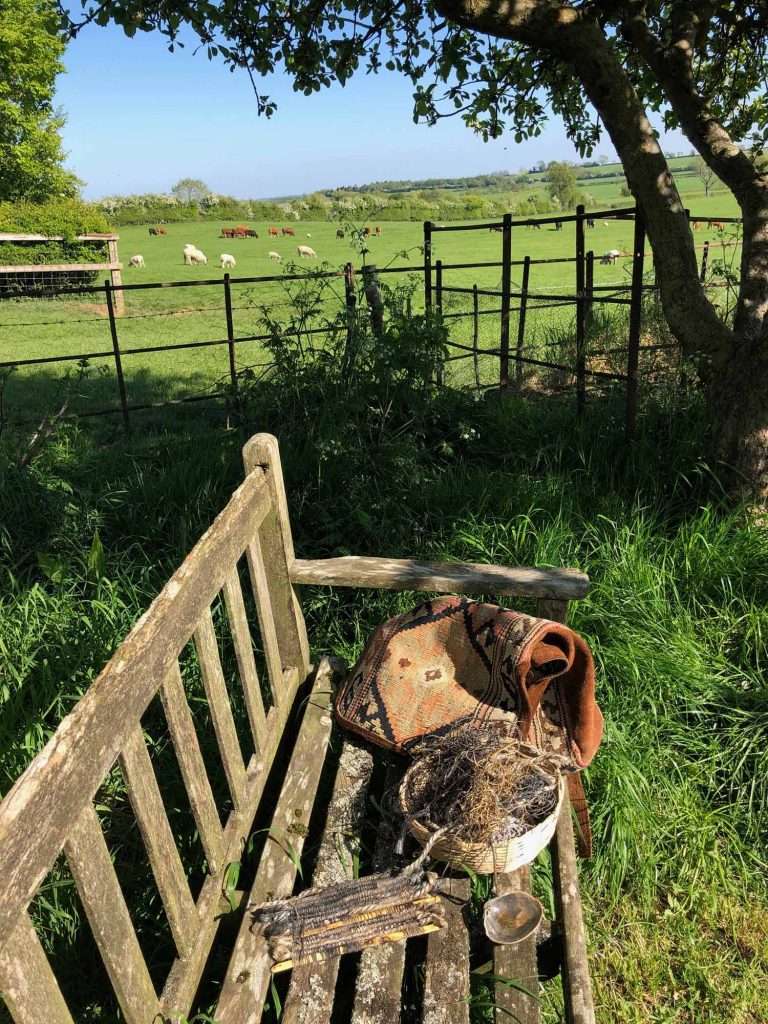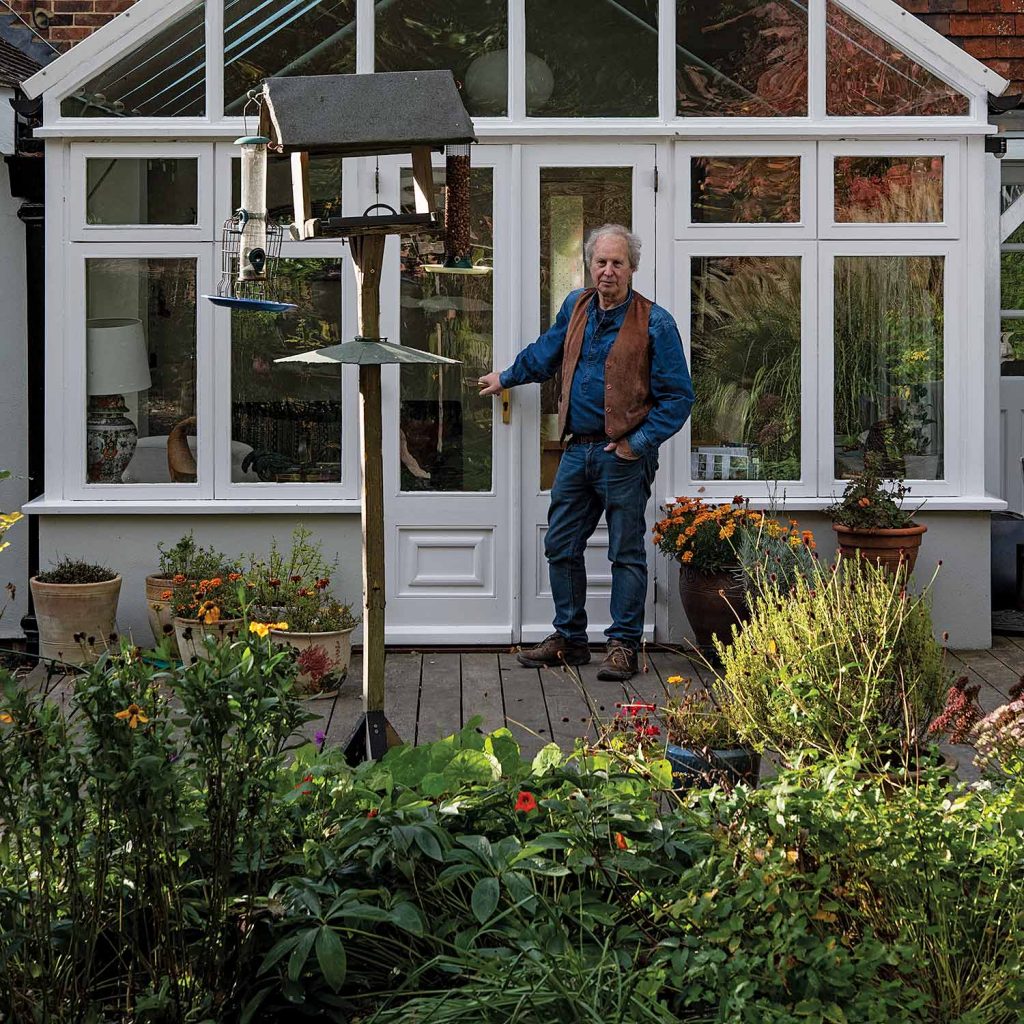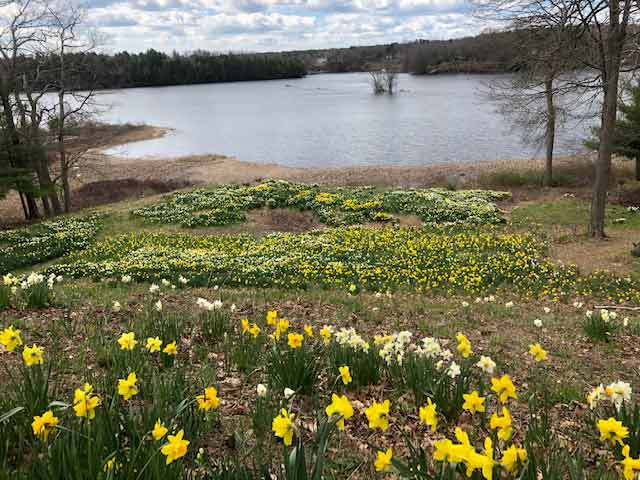June and July have been busy months at browngrotta arts. We’ve been immersed with our Artsy shows Catalog Lookback: Fan Favorites and Cross Currents: Water/Art/Influence that we’re just catching up on our month-end wrap-ups. We’ve also brought in some spectacular art from some of your favorites during this time, including work from Jane Balsgaard, Grethe Wittrock, Annette Bellamy, Ed Rossbach, and so many more outstanding artists.
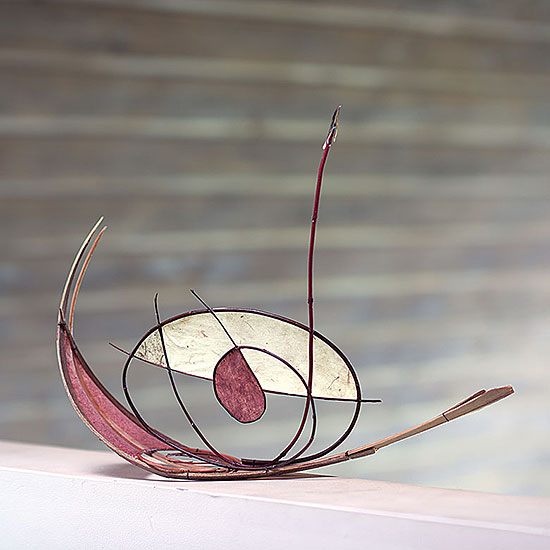
Jane Balsgaard is a Denmark-based artist who experiments with expressions in paper in connection with sticks and other finds from nature, like the piece presented above. Her workspace consists of collections of natural materials for use in her work – most of her natural materials come from her own garden.
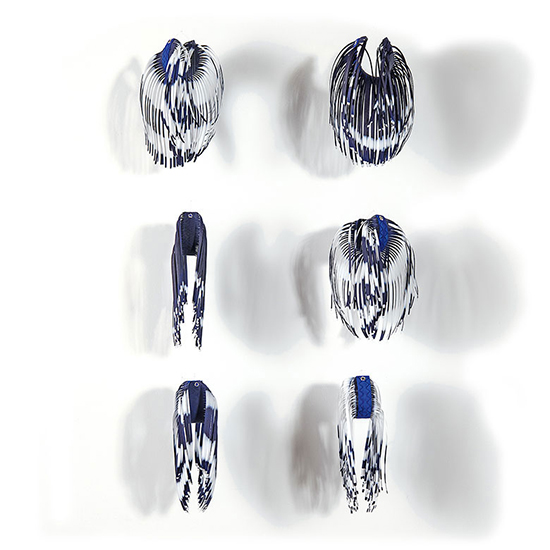
Made of sailcloth, Grethe Wittrock’s Magpies symbolizes the start of spring and a new beginning. A magpie couple has built their nest in a tree outside her studio window in Copenhagen. They come back every spring to repair the same nest, gathering twigs and branches. When she gazes out her window, she sees the baby magpies growing into young magpies who eventually learn to fly. Wittrock’s works resemble the birds’ wings and their blue-and-white feathers.
“I use sailcloth as a canvas, “ said Grethe Wittrock. “It gives the pieces a distinct lightness as well alluding to the process of using the wind to travel across the oceans.
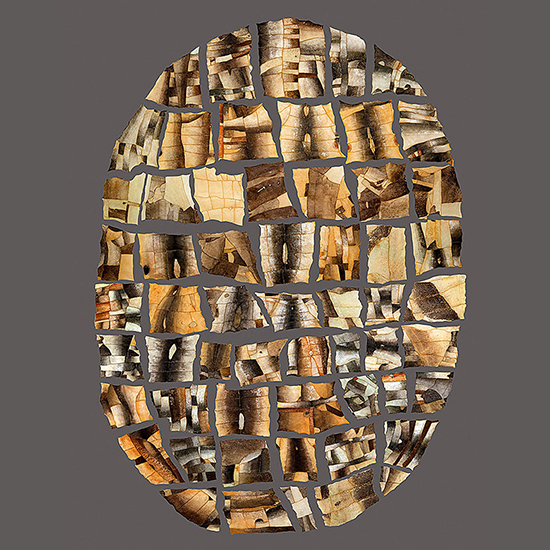
Annette Bellamy is an artist based out of Seattle, Washington who also doubles as a commercial fisherwoman. When asked about her inspiration in work and life, the two are intertwined quite seamlessly.
“I am an artist and a fisherwoman,” said Annette Bellamy. “Life on the water and life making art fuel each other. I value the physicality of both as well as the dependence upon my hands, the importance of timing, the work ethic and tools required, and the reflection afforded.”
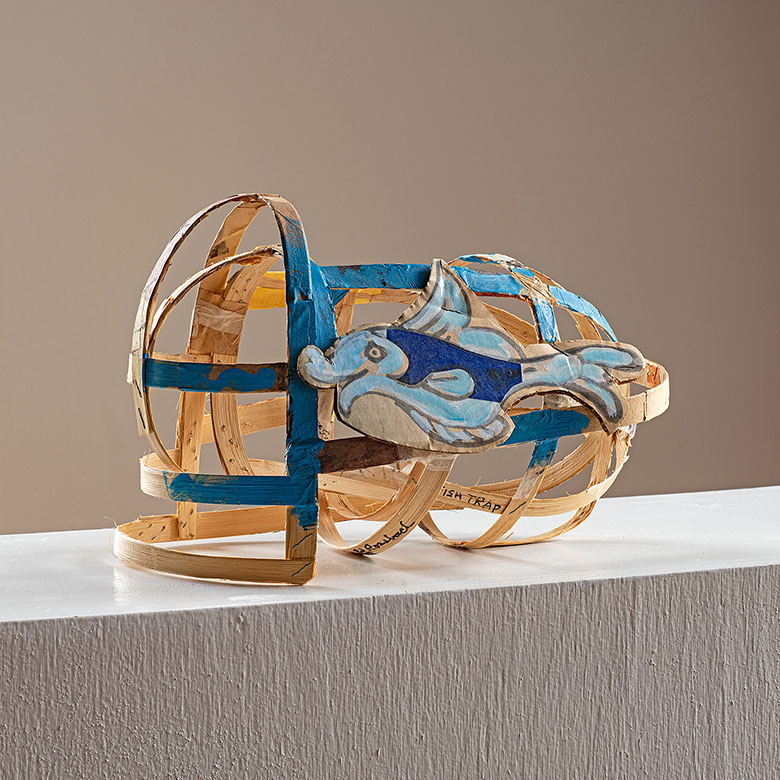
This alluring, classic piece of artwork, Fish-Trap was created in 1988 by the late Ed Rossbach, iconic American fiber artist who was known for working in basketmaking and weaving.
Several years before his death, Ed Rossbach offered this insight:
“Well, I love all this mixture of things that people might interpret in various ways that I didn’t intend,” said Ed Rossbach. “I think it’s sort of amusing to have people misunderstand things and take things seriously that you mean not to be serious. Of course I don’t persuade myself that people think much about these things at all; I think they just sort of pass before their eyes. May-be somebody will think a little bit about it, but I don’t think anybody is very concerned about what the meaning is of what I’m doing. I think it’s very unusual for people to look seriously at what someone else is offering as a work of art. You’re very much doing it for yourself. And I suppose that’s the essence of what I’m doing….”
In September, we will be launching our Volume 50 exhibition and catalog. We’re excited to launch, as we know you’re going to love what’s in store – you’ll even be seeing some familiar artists like Wittrock and Bellamy.

